The San Pedro Creek originates at the San Pedro Spring a couple of miles from downtown San Antonio. It has been a special place, a sacred site for thousands of years. It still is.
Actually there is more than one spring in the 46 acre San Pedro Park, but most of the time they’re dry. They don’t flow. Only if there is a major rain event will the springs fill with water and spill out into the creek bed.
However, due to a miracle of city engineering, the springs do seem to flow out of a wall on the edge of the pool. Water surges from a row of pipes as if there was a spring behind it. It fills the pool where the tall Cypress stand, studying their reflection in the water, where the sky, blue and white, is admiring it’s face - if I might borrow a phrase. This was the place of Mother Nature. This was the place where the people gathered. The people who lived here thousands of years ago when the springs flowed naturally knew something about that.
Below the spacious pond there is no water. It disappears as magically as it appeared. Strange.
In fact the entire river bed disappears underground, under the VIA bus barn across the street. It doesn’t reappear until it’s on the other side of Flores, at Five points, a quarter mile away.
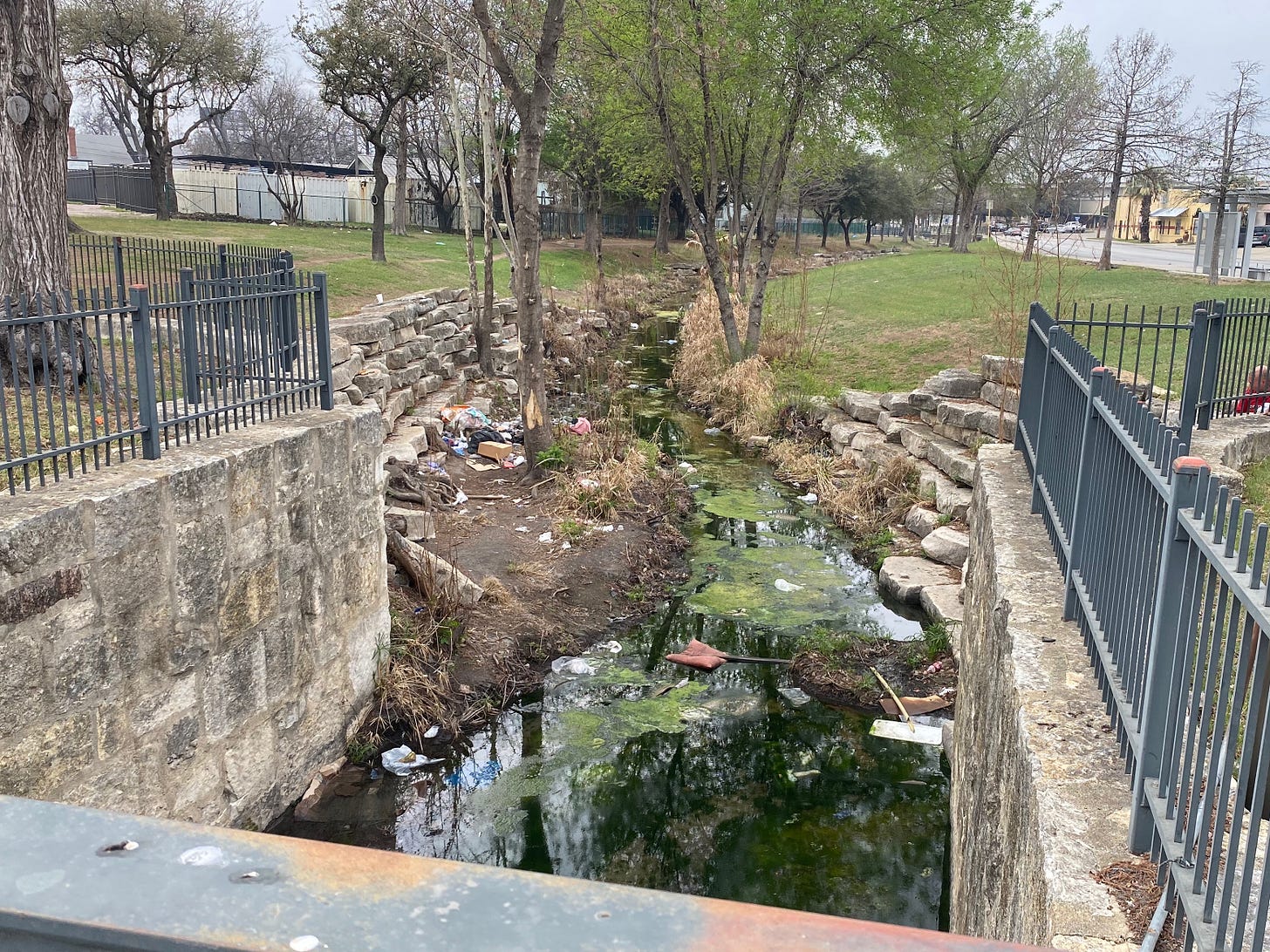
Five Points is marked by a historical marker explaining that this is where the stage coach crossed the river on its way to Fredericksburg back in the day and before that where the Comanches crossed before they got chased off. It was the best place to ford the creek on account of the shallow water and the sandy bottom. Actually it’s not much of a creek at this point, it’s only a few inches deep
Two hundred yards after the stream emerges from underground, it enters a large concrete tunnel.
The tunnel divides and forms side channels. They penetrate the earth looking for a way out. They provide a canvas for local artists.
They provide shelter for local residents.
These paintings go deep underground, beyond where I chose to venture.
“Who is it?” someone called out. “Exploring.” I replied. “What?” “I’m just exploring.” Silence.
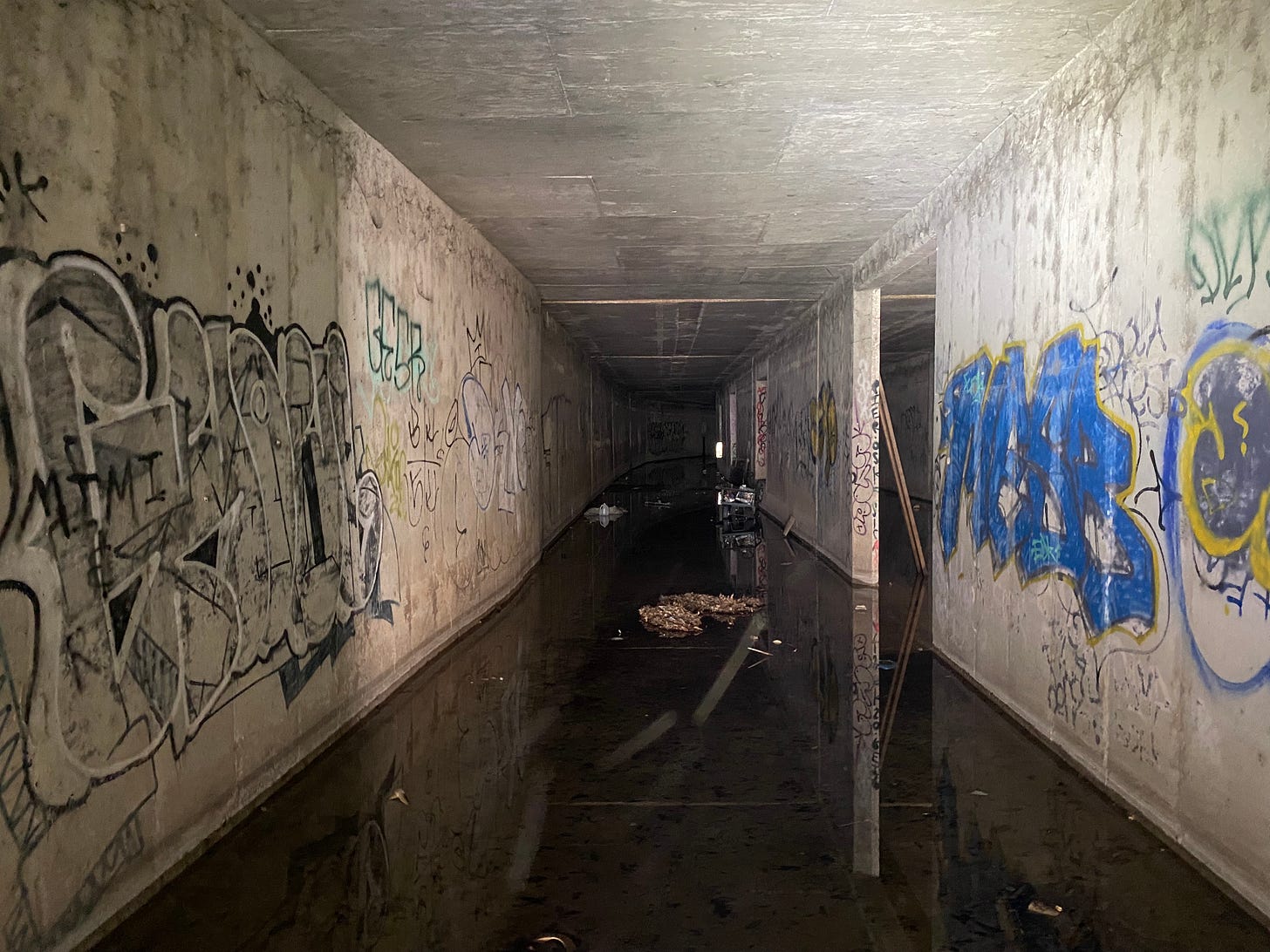
The creek briefly re-emerges under the I-10 expressway and then disappears again.
It doesn’t reappear until just before the Culture Park where a giant filtering machine lifts trash out of the water.
On the other side of the giant filtering machine is another wall, a water wall.
The water streams down the face of the wall and enters the San Pedro Creek Culture Park, a half mile of elaborate urban landscaping that highlights the creek and it’s history, on it’s way to the downtown and eventually confluence with the San Antonio River.
There are 54 signs, inscriptions, emblems, plaques, maps and murals along the San Pedro Creek Culture Park (I counted them) from it’s inception at the giant water wall to it’s termination at Cesar Chavez Blvd. Enough for half a day of strolling along the promenades and reading signs.
There are embayments and swales built into the landscaping, ramps, channels and waterfalls. It unfolds as you walk. Or in my case ride. Gees millions of dollars must have been spent on this place. Anyways, it’s fantastic, a landscaped garden amidst the towering downtown buildings.
The theme of the San Pedro Culture Park is inclusion. How all these different people from all different parts of the world came together and built their communities on the banks of the San Pedro Creek.
Immigrants came: from Germany, Poland, France, Lebanon, the Canary Islands, Italy, and mixed with the Indigenous people, the Mexicans and the African-Americans and the American-Americans that settled here along the creek. That’s what the signs tell us.
That’s what the inscription says chiseled into the rock along the creek, “DE TODOS CAMINOS SOMOS TODOS UNO” it says. From many roads we came and become one.
The signs describe how the river was transformed from it’s naturally lush and fertile tree lined self, providing food and shelter for man, animal and plant, to being lined with garden plots and grazing land by the early settlers, to having houses and buildings built up along its banks, to being forced into channels by concrete walls and culverts, to being buried alive underground and basically turned into a drainage ditch. It also tells the story of reviving it, the renovation and restoration of the creek, returning it to a place of respect.
That’s the San Pedro Culture Park all along the creek from the wall of water to downtown. It’s the story of how this creek was a blessing to the people who lived back then and how it is a blessing now to the people who live downtown.
Behind the wall of water it’s still a drainage ditch. It’s still buried underground in places and still has concrete banks. But the good thing is that it’s still here and it’s remembered. Now the houses and businesses from the 1800’s are gone and huge buildings have taken over but the stream still winds it’s way, as it has for millions of years, through fields and forests and habitations and cities and has always nourished whoever came to her.
The music for this fable is from Tinarawen, a band from the desert area of Mali in North Africa. Their native rhythms and chord play mix with the Blues from the Southern United States to create a unique sound.

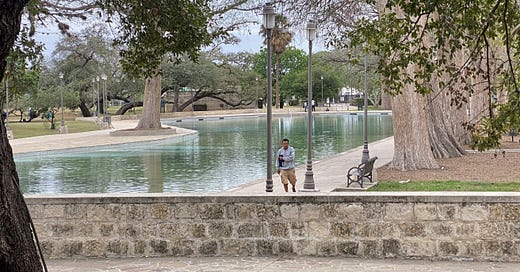



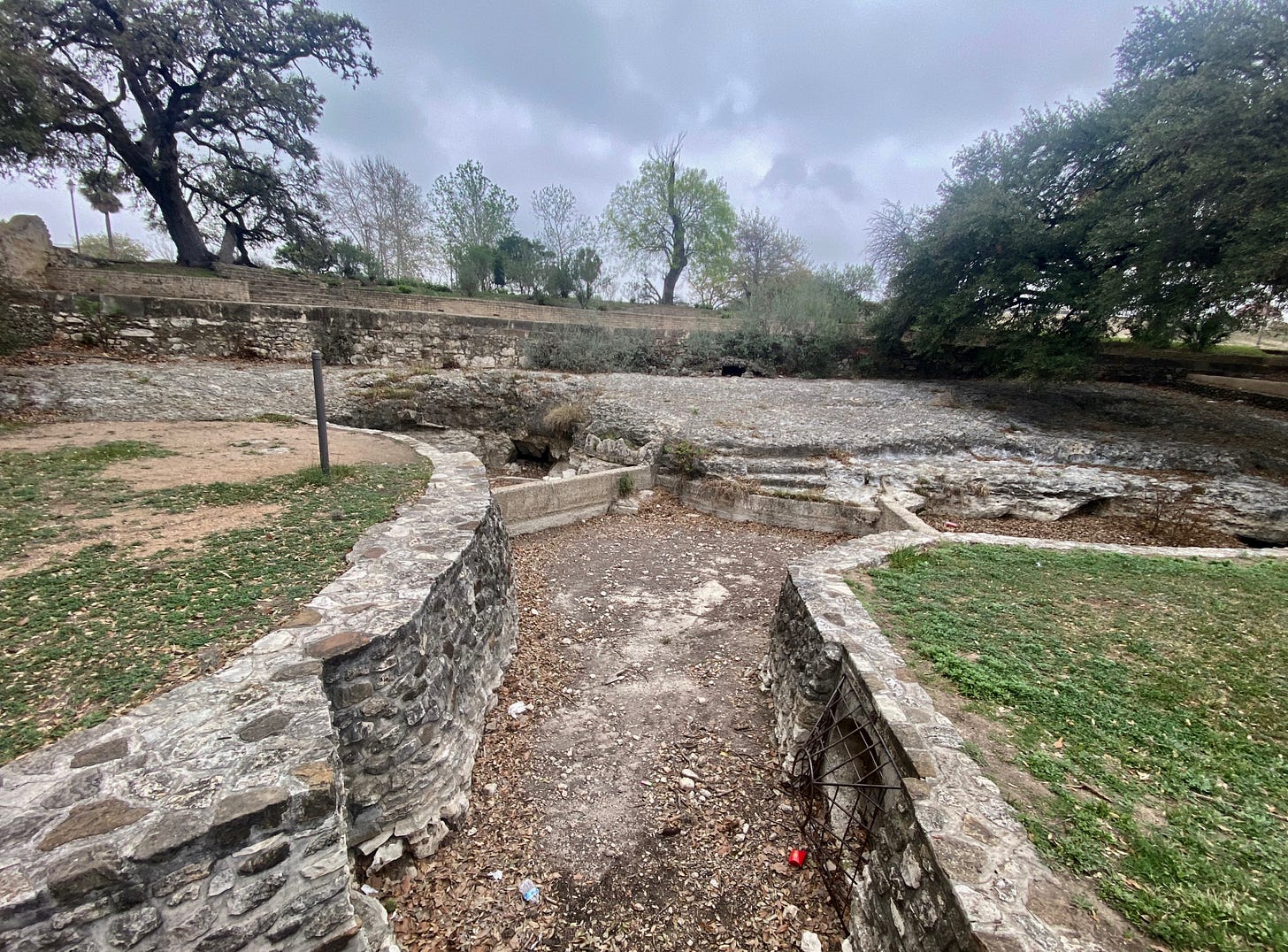
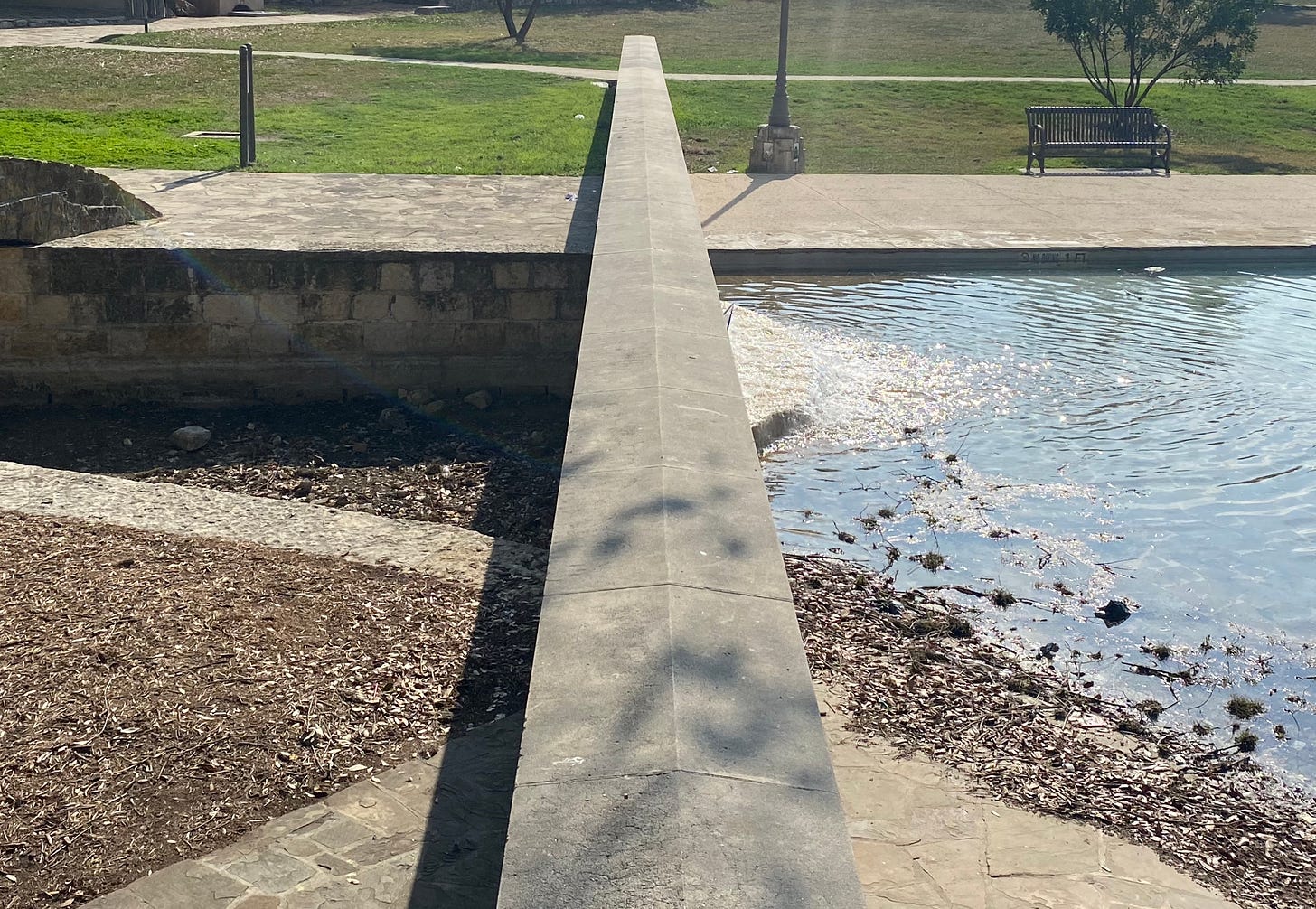
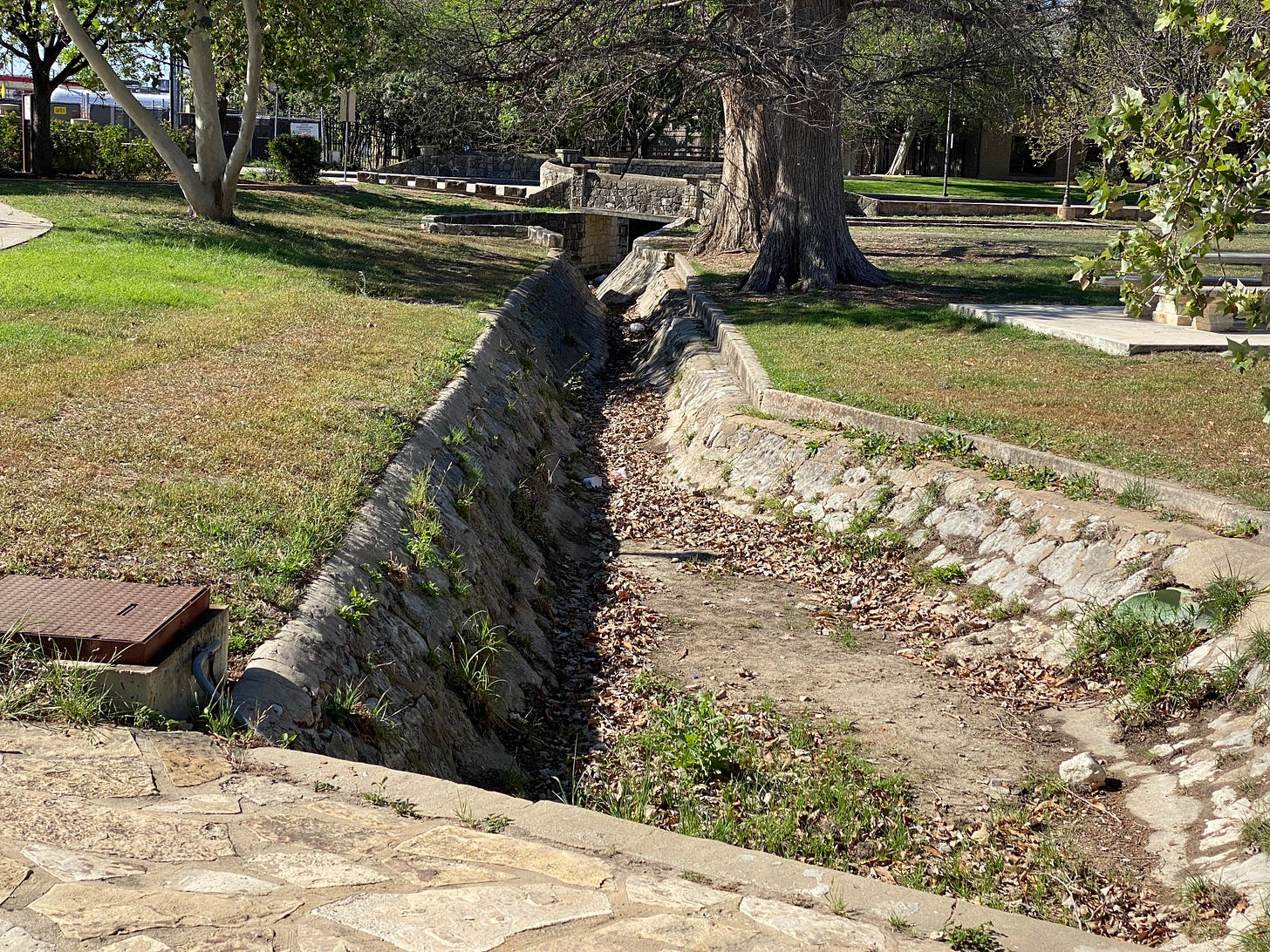
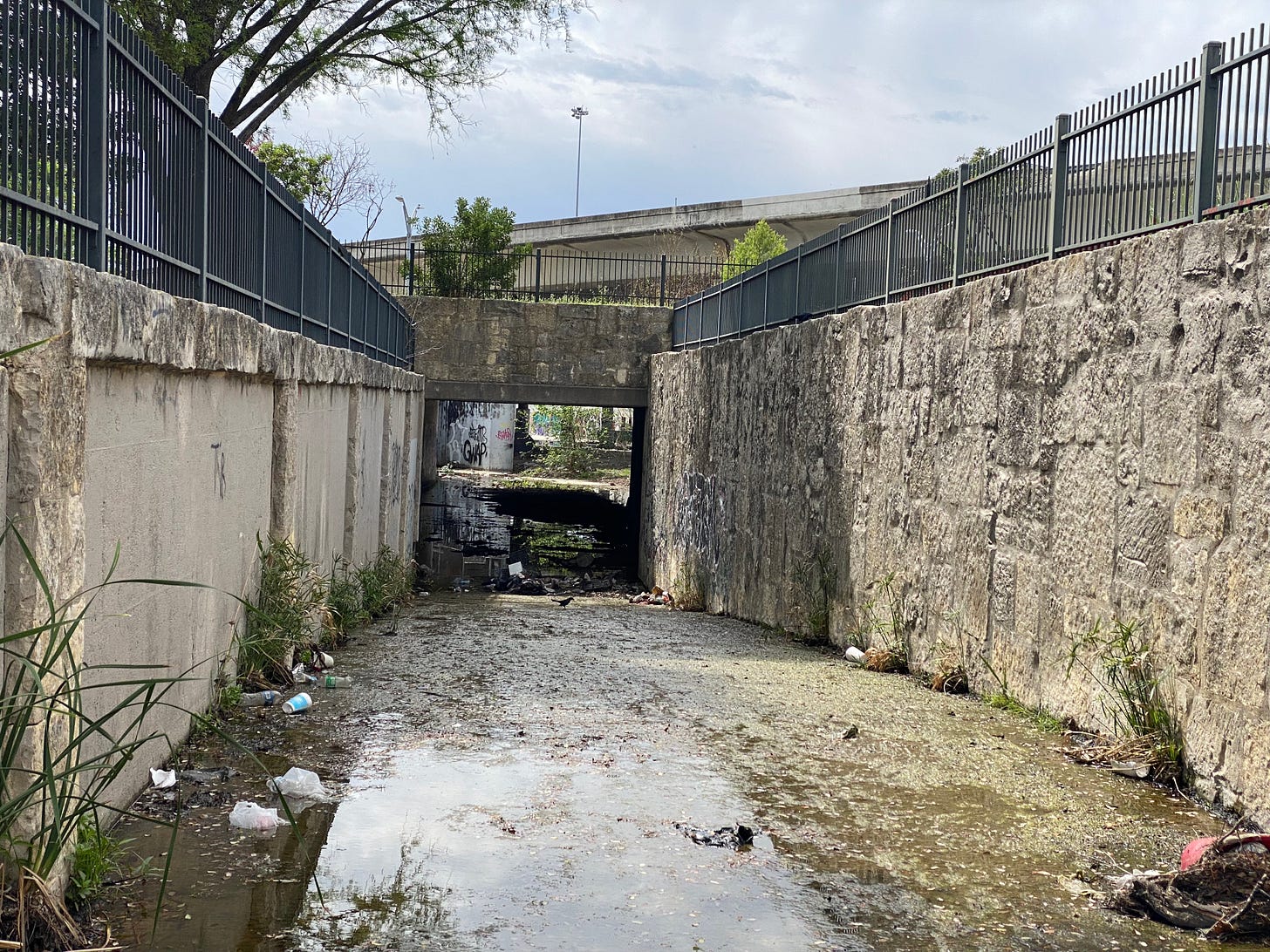
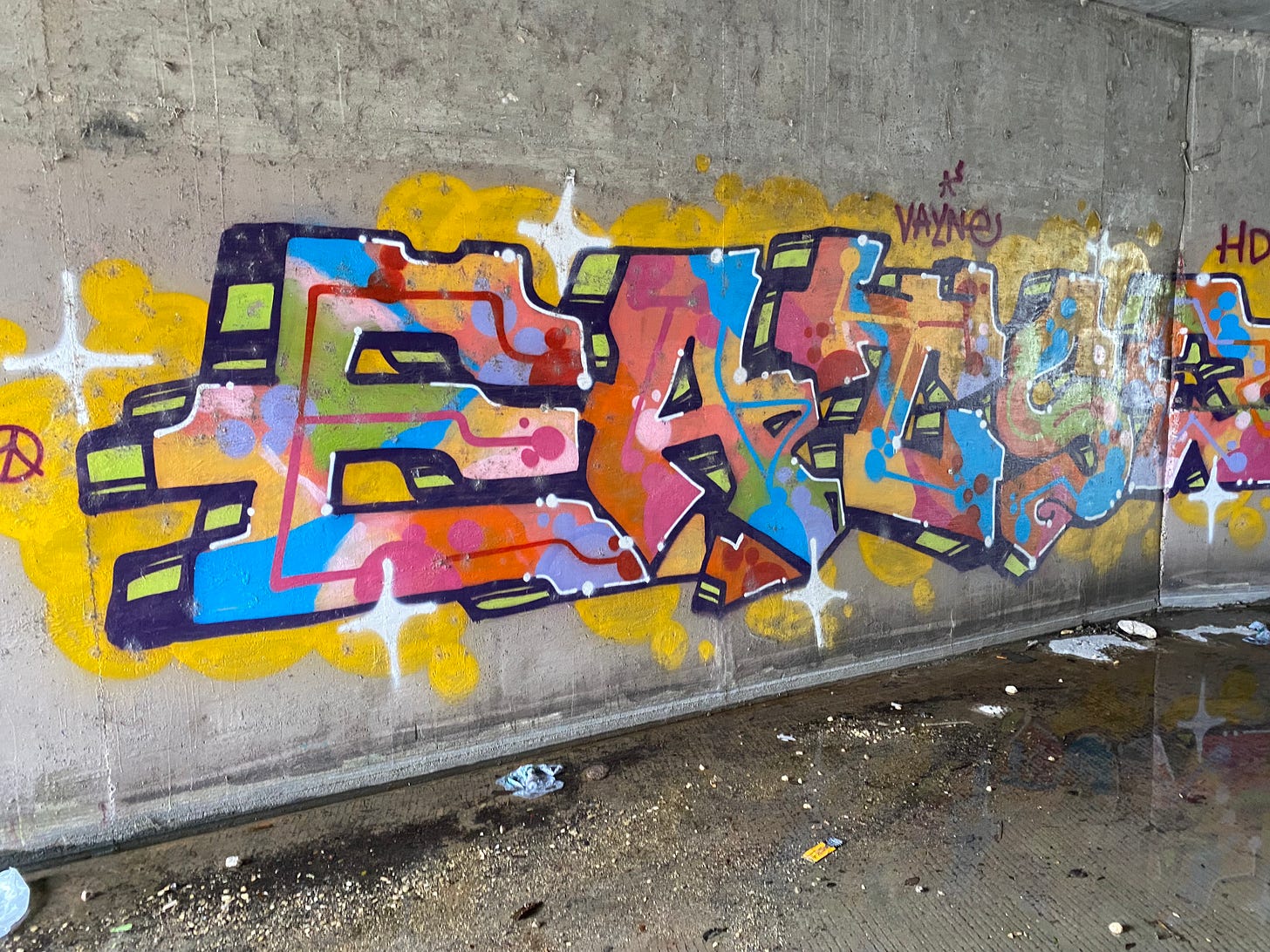
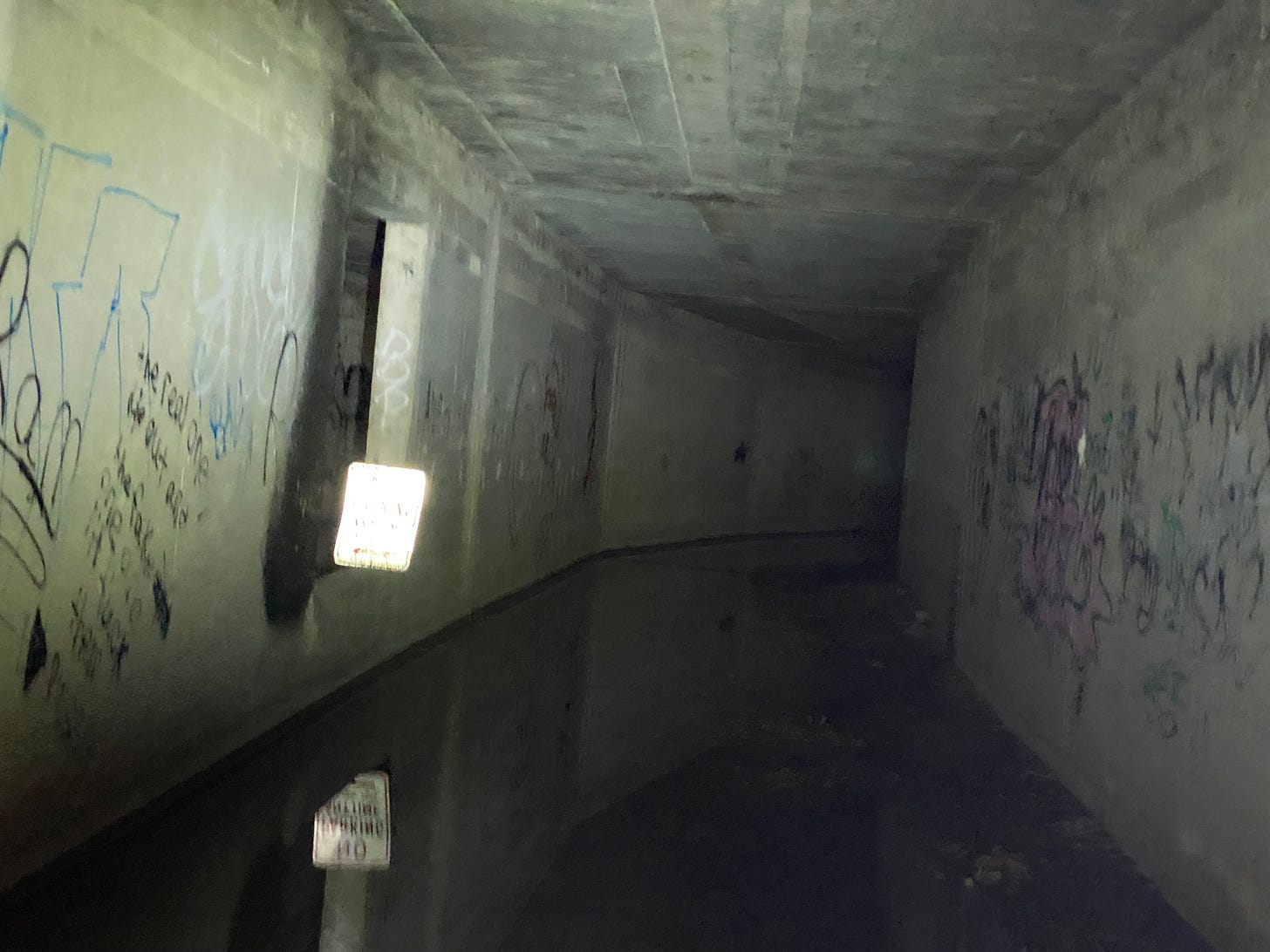
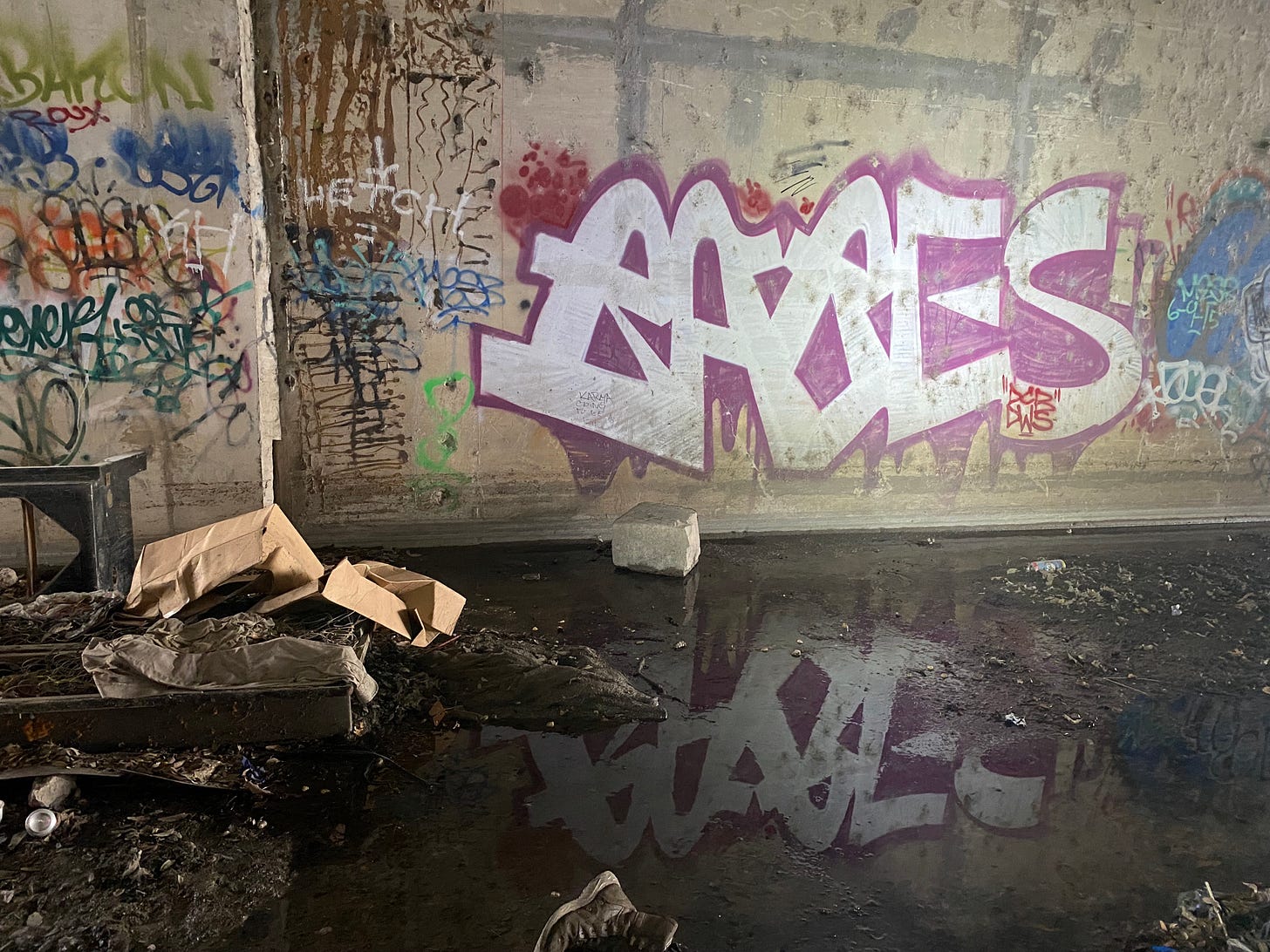
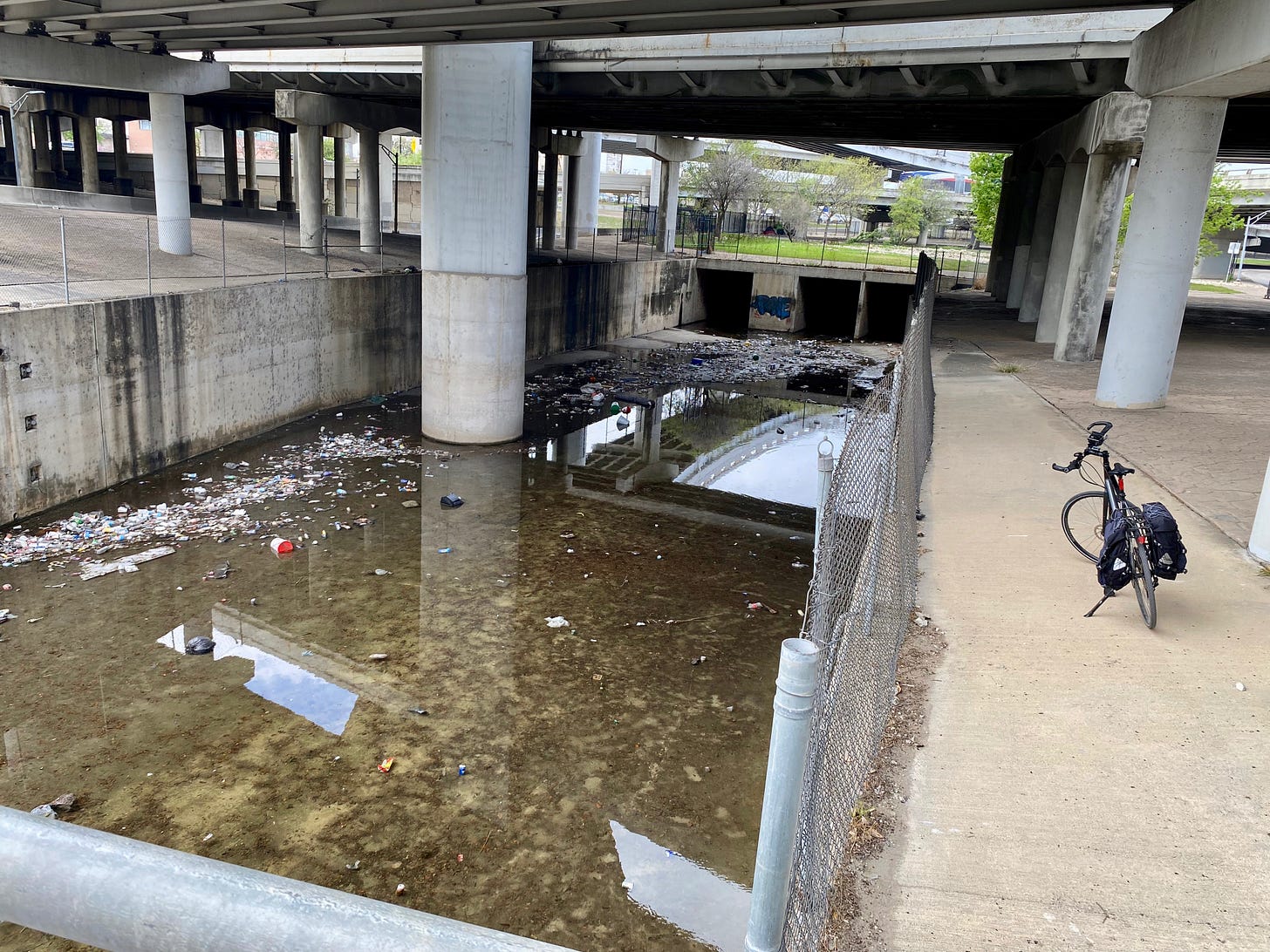
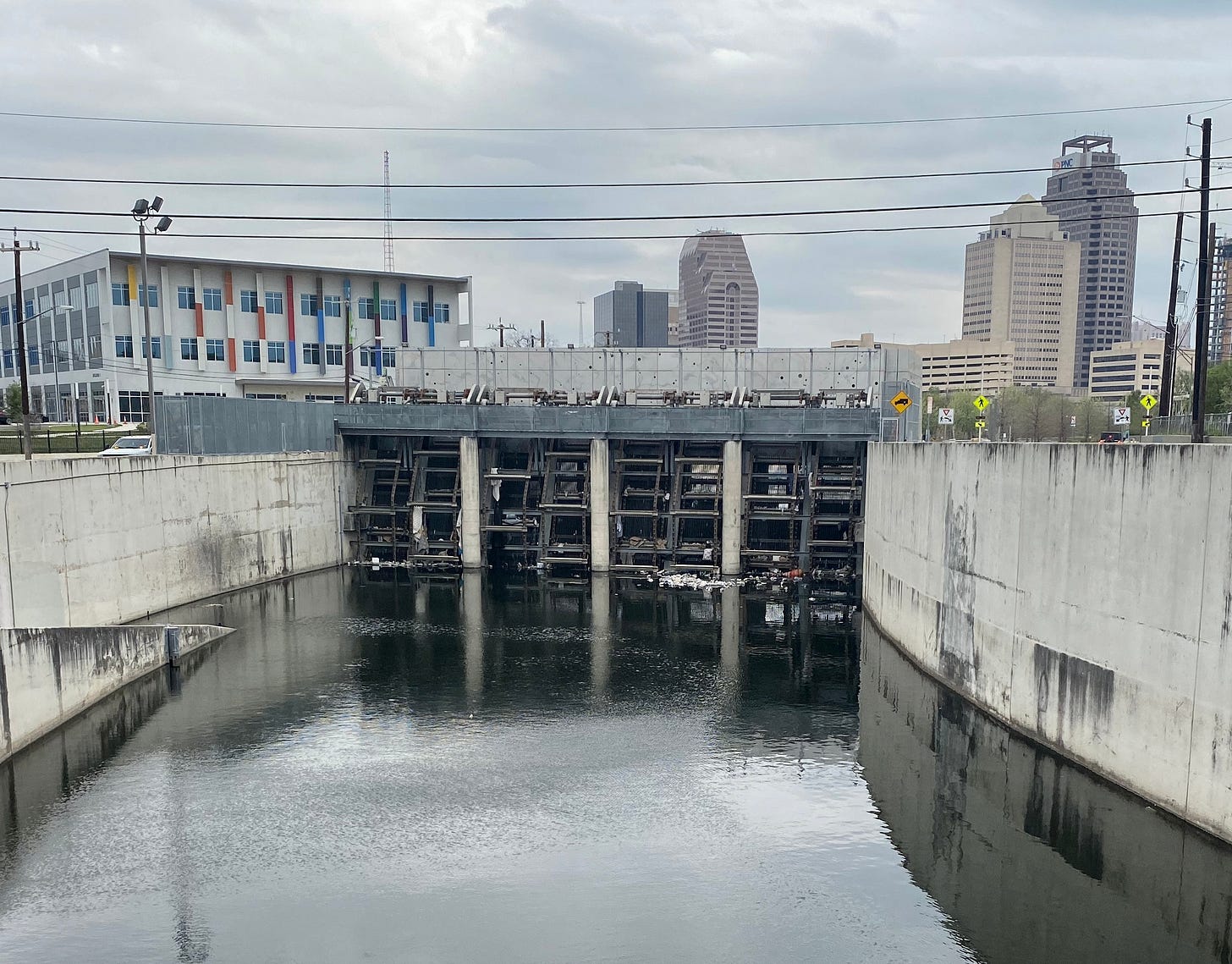
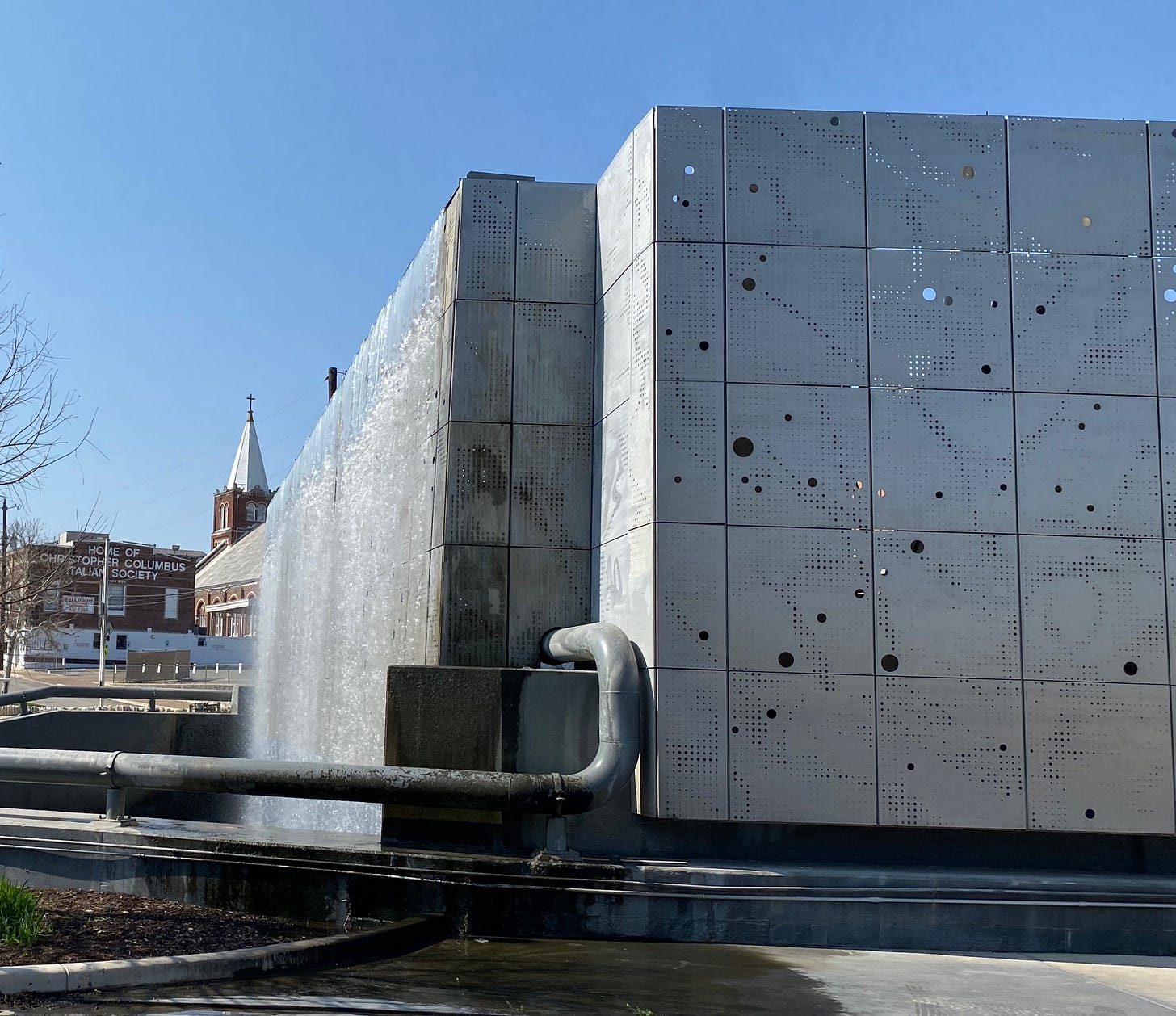
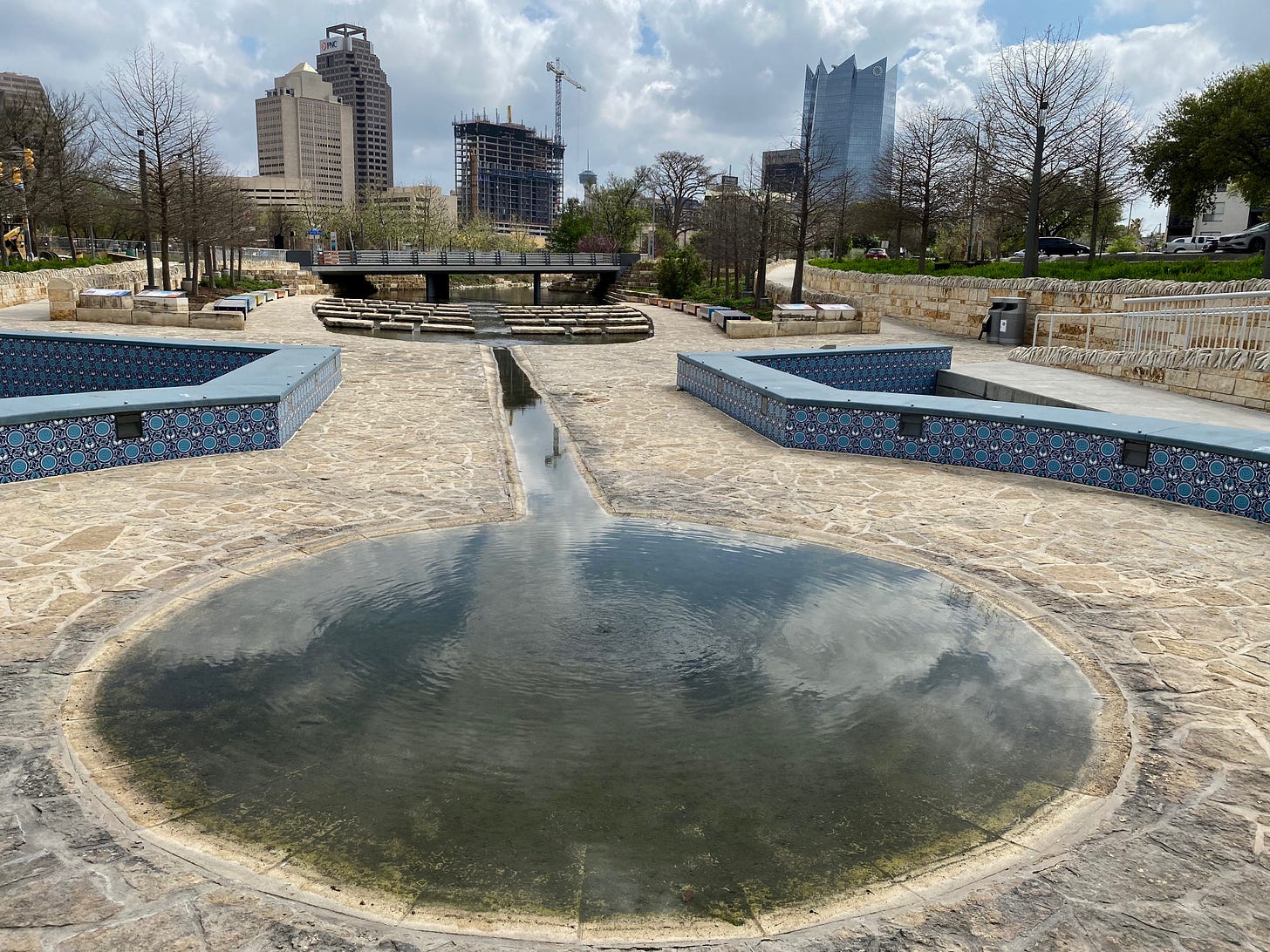
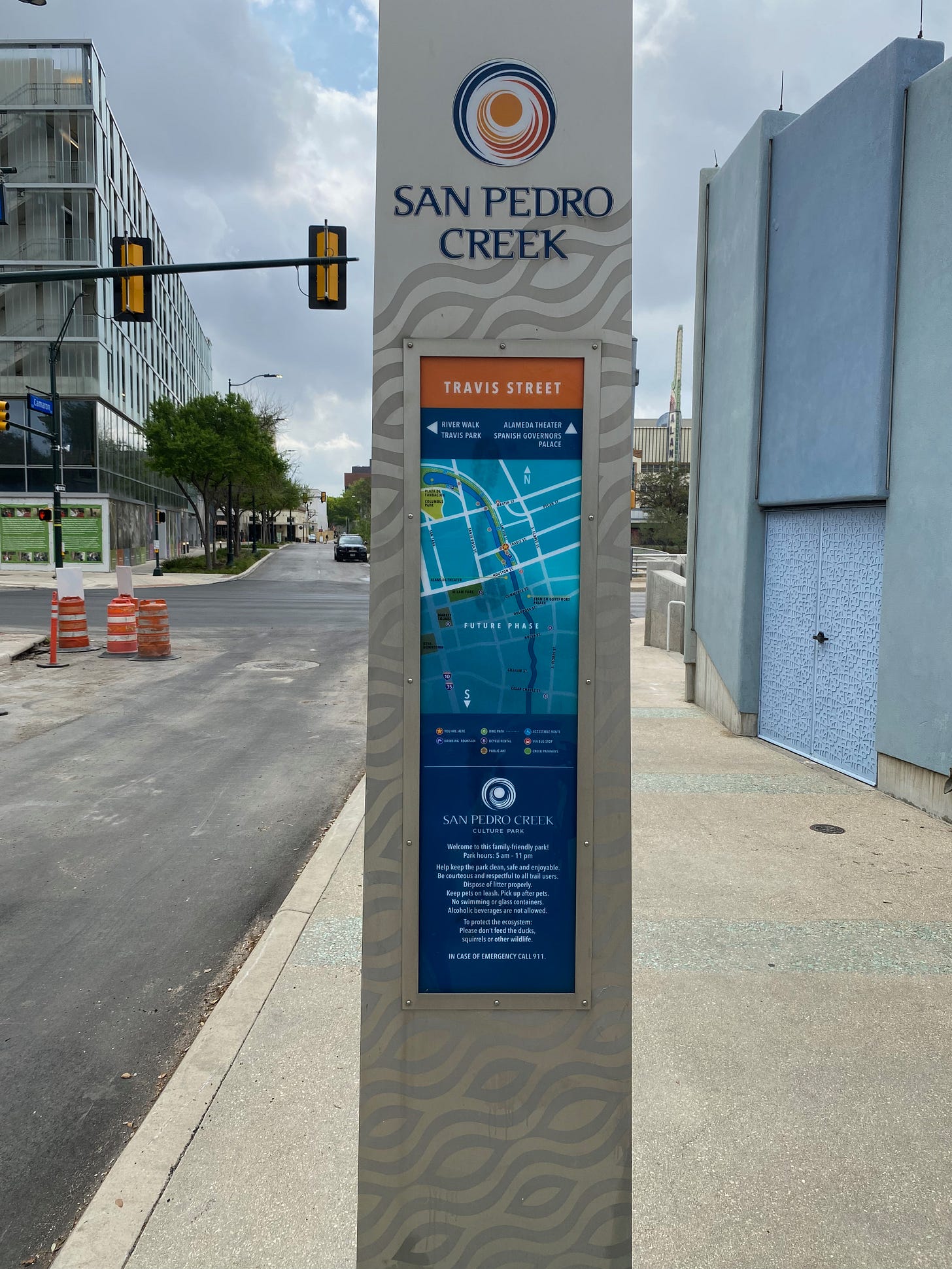
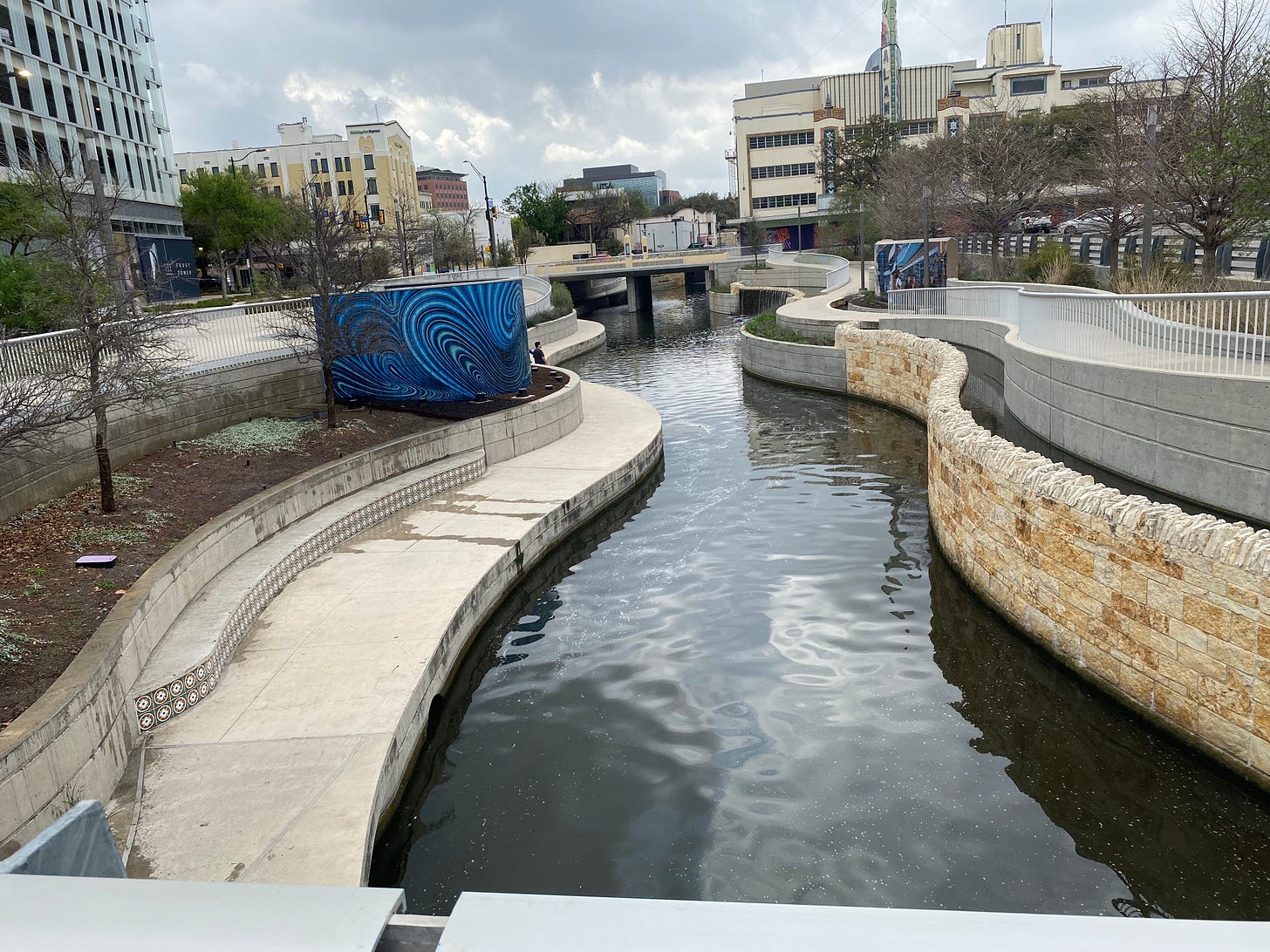
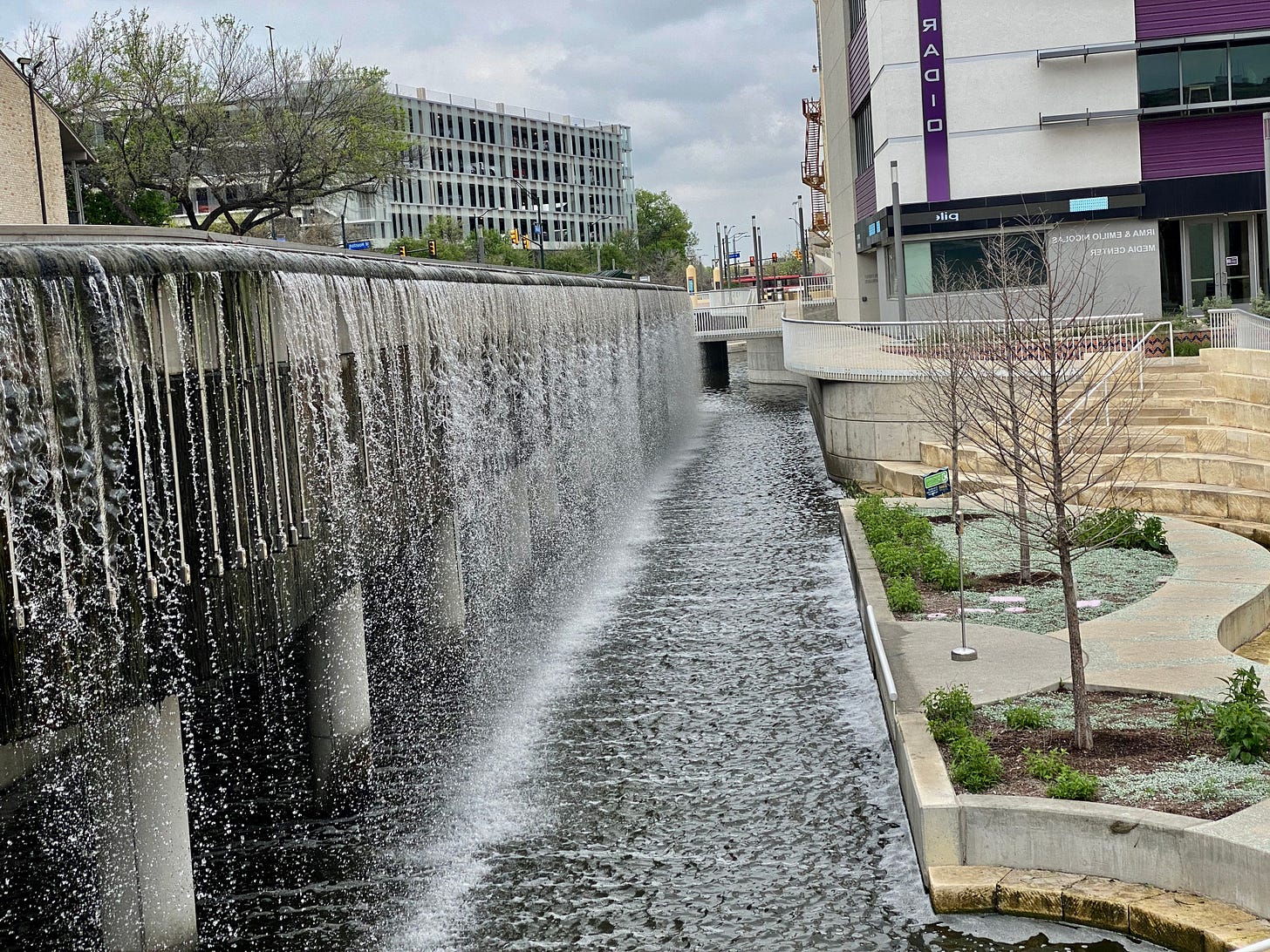
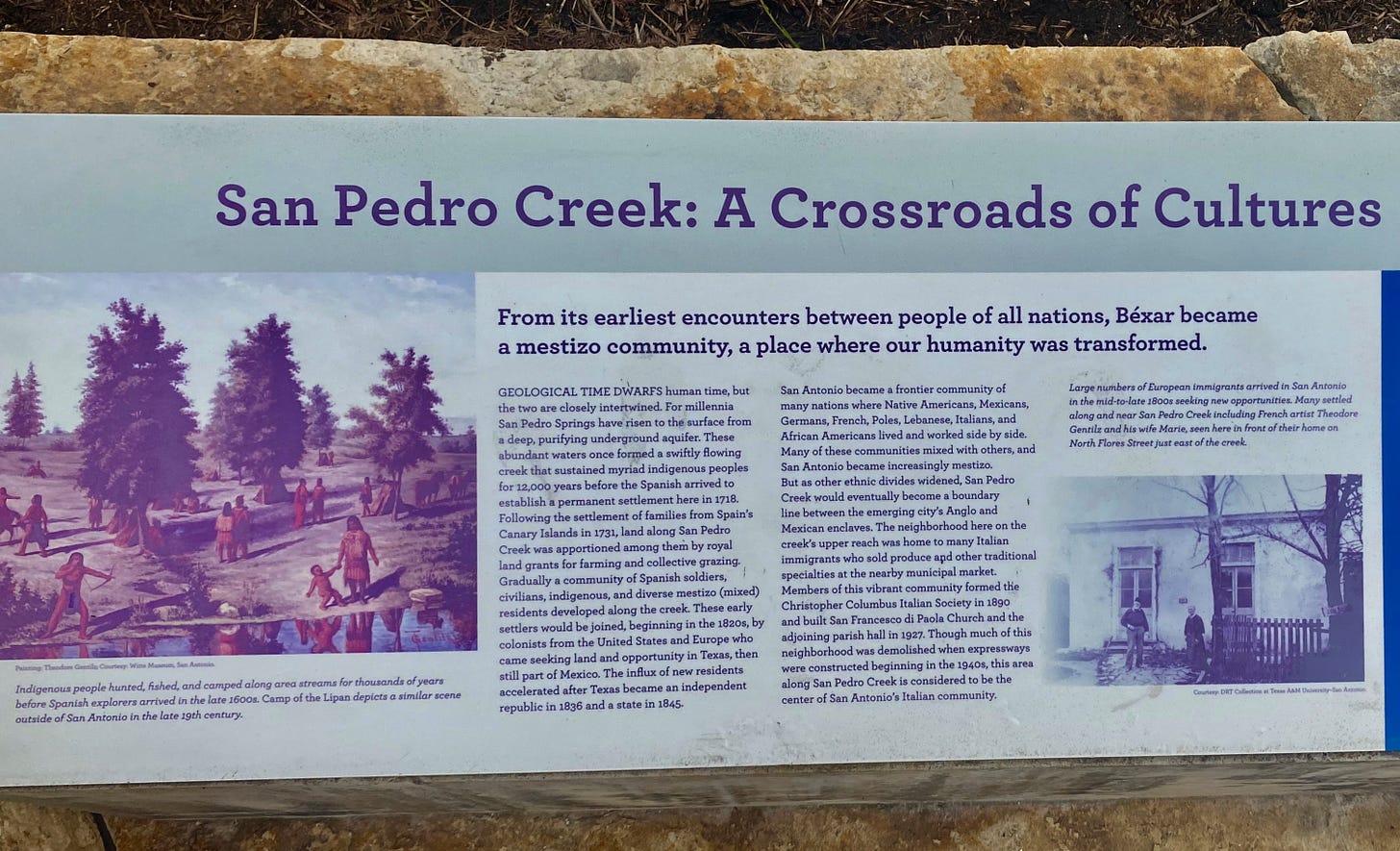
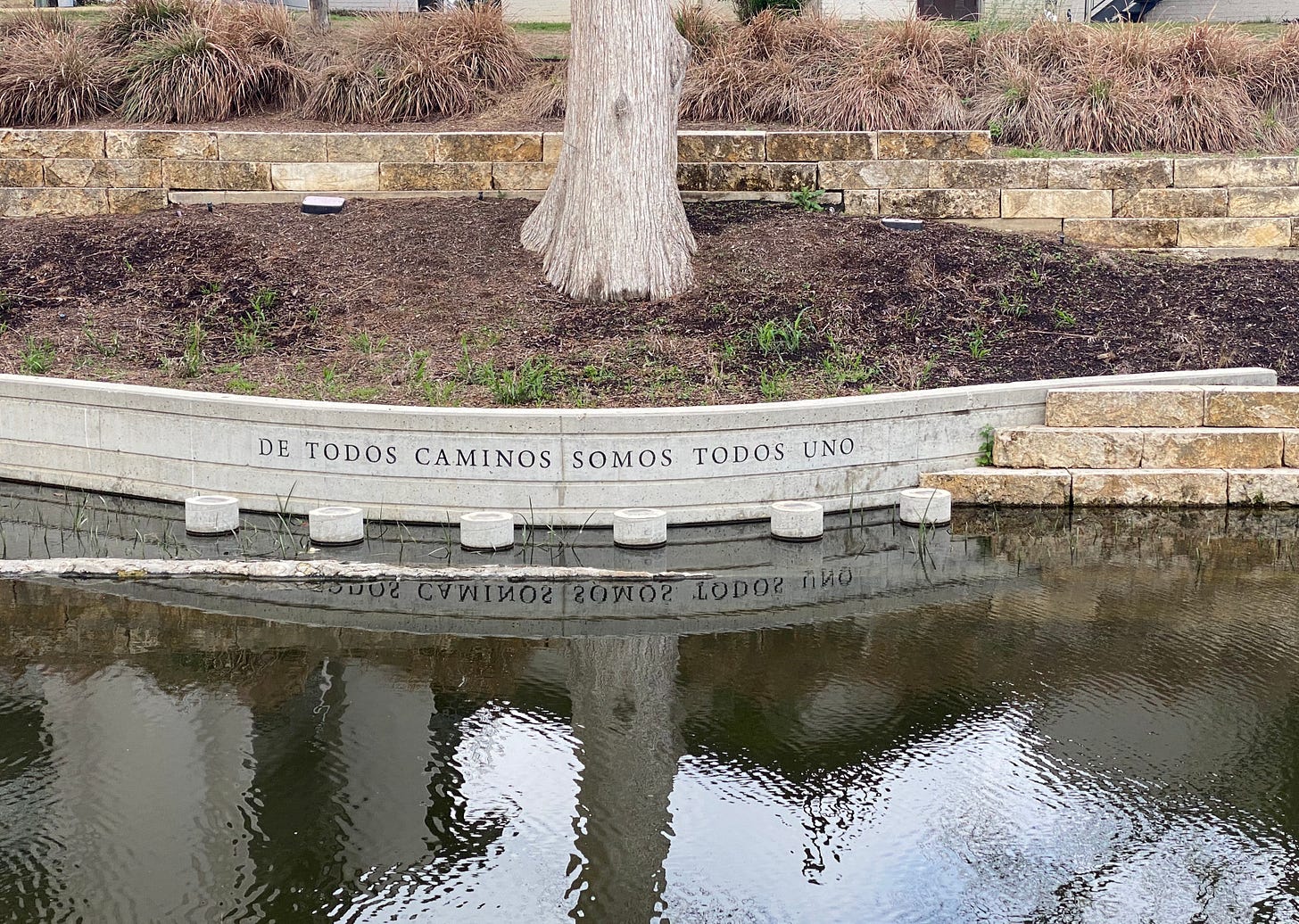
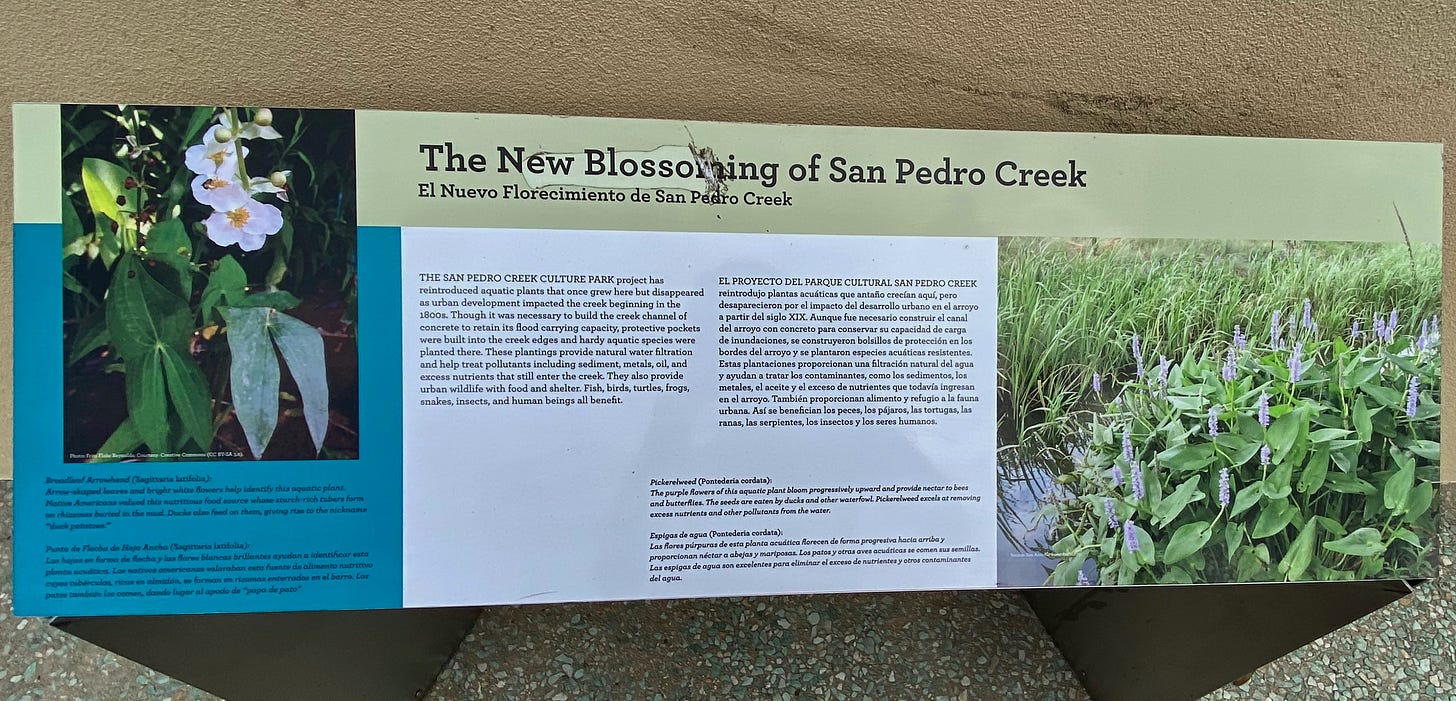
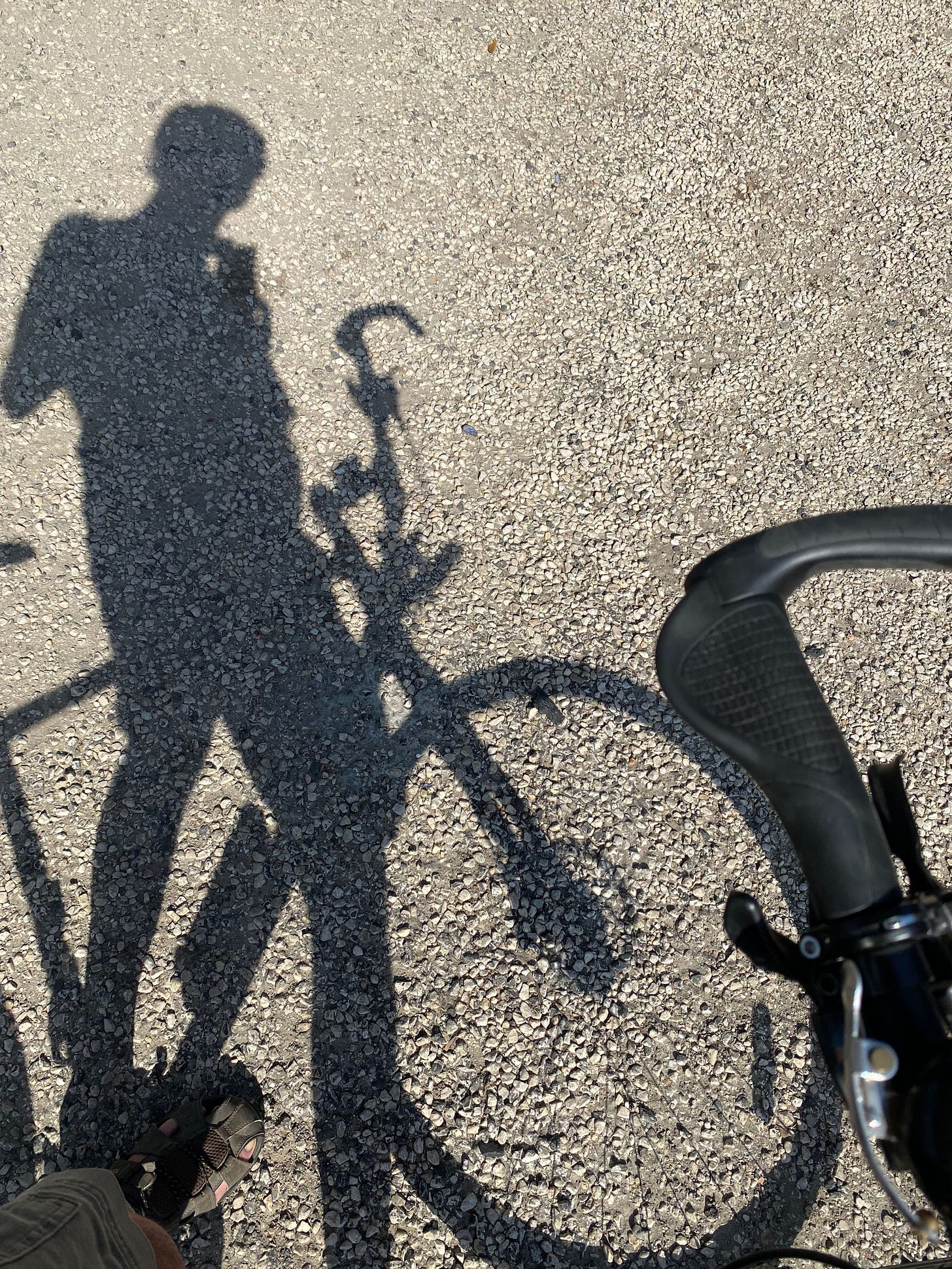

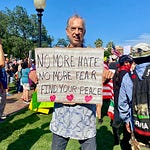
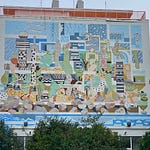
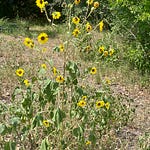
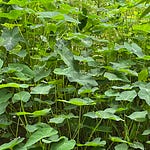
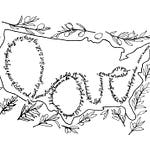
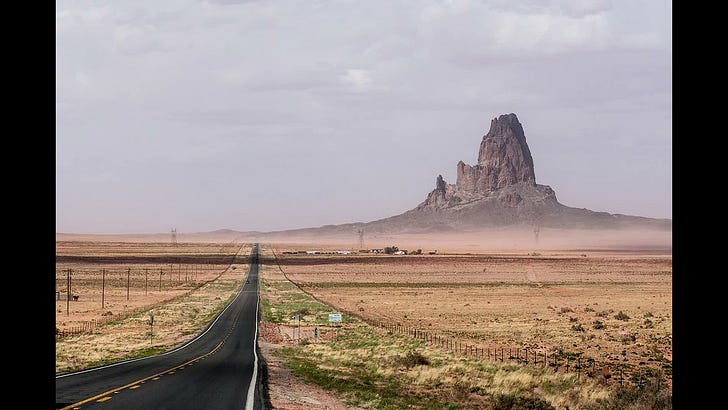
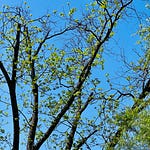
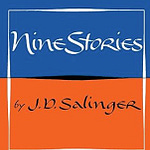
Share this post